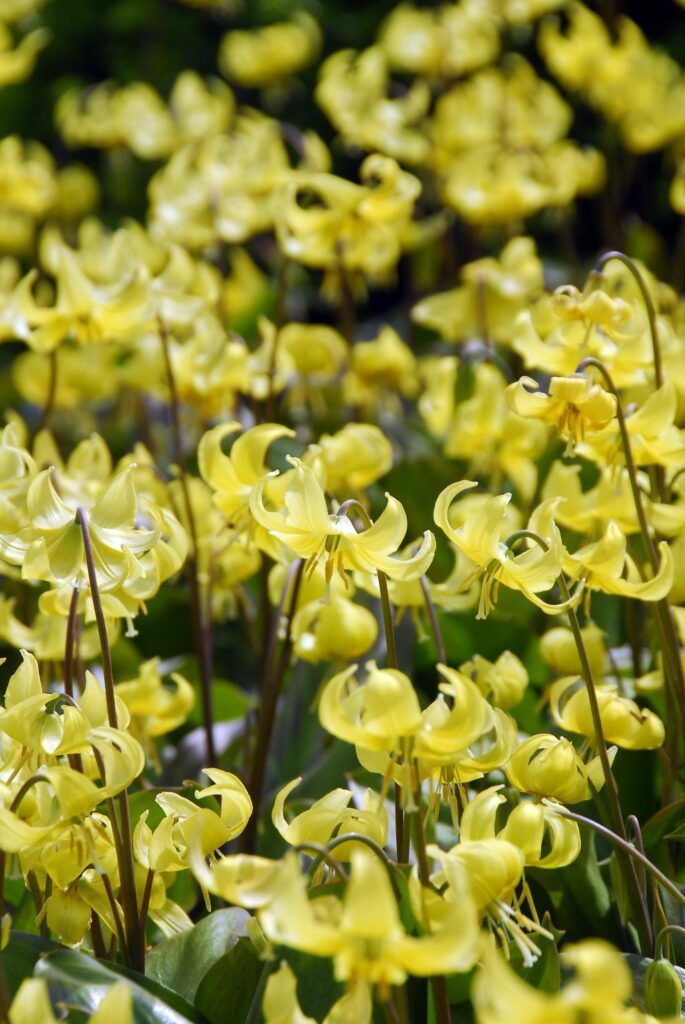Flower color: yellow, white and pink
Flowering period: April – May
Average plant height: 12 inches
Planting depth to base of bulb: 4 inches
Spacing between bulbs: 6 inches
Type of bulb: tuberous roots
Light requirements: full or partial shade
Landscape uses: under trees and shrubs, well-drained rock gardens, and perennial beds
Of the approximately 16 species, no fewer than 15 are native to North America. Only one species, Erythronium dens-canis, grows in Europe as well as in Asia (as far east as Japan). This is the species known as Dog’s-tooth violet because of the shape of its tuberous roots. The natural habitat for this species is a woody mountainous region. They are not easy to cultivate.
Plant the small bulbs as soon as you acquire them because they dry out quickly. Having a nutrient-rich, moisture-retentive soil is important. Experience has shown that the plants can remain planted in the same location for many years where they can spread and produce increasingly more flowers. A layer of mulch during a dry summer can work wonders by preventing the plants from drying out.

